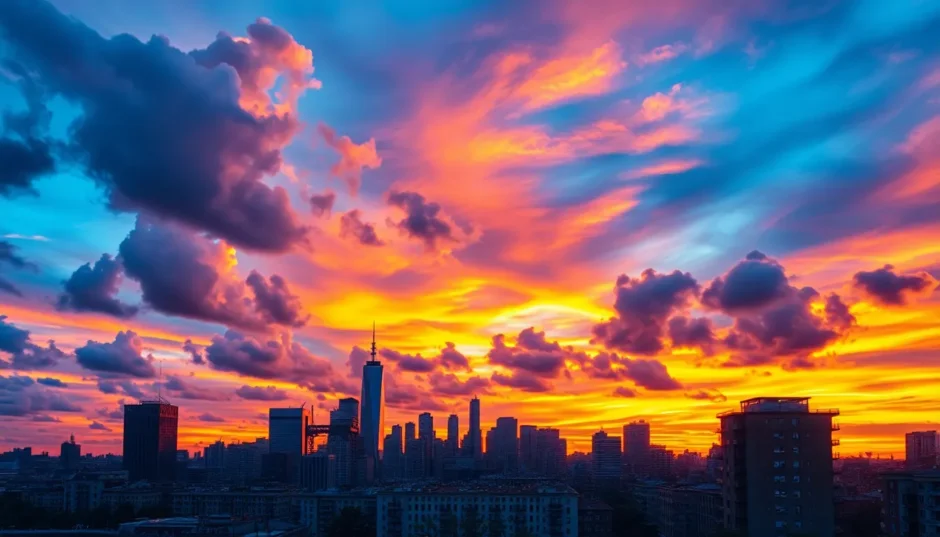Have you ever taken a photo where the sky looks completely white or the shadows are so dark you can’t see any details? That’s where HDR technology comes to the rescue! High dynamic range, or HDR, is like giving your photos and videos superpowers to capture what our eyes actually see in real life. It makes colors pop, brings out hidden details, and creates images that feel alive and vibrant.
From smartphone cameras to professional photography equipment, HDR has revolutionized how we capture and experience visual content. Whether you’re shooting breathtaking landscapes or creating social media content, understanding HDR can take your photography skills to the next level.
Table of Contents
- Understanding high dynamic range technology
- Advantages of using HDR in your photography
- HDR applications across different photography genres
- Essential gear for HDR photography
- Common HDR mistakes and how to fix them
- Exploring smart HDR capcut features
- Creating HDR video effects with CapCut
- Maximizing your video editor HDR experience
- Final thoughts on HDR photography and video
- Frequently asked questions
Understanding high dynamic range technology
HDR might sound complicated, but it’s actually a simple concept that makes a huge difference in your photos and videos. Think of it as a way to capture both the brightest brights and the darkest darks in a single image, just like how your eyes work when they adjust to different lighting conditions.
When you look at a beautiful sunset, your eyes can see the colorful sky while still making out details in the shadowy foreground. Regular cameras often struggle with this, but HDR technology solves the problem by combining multiple exposures into one perfect image.
What does HDR mean in photography?
In photography, HDR stands for High Dynamic Range, which is a technique where you take several photos of the same scene at different exposure levels and then blend them together. This process creates a single image that captures details in both the brightest highlights and the darkest shadows that would normally be lost in a standard photo.
The magic of HDR photography lies in its ability to show everything from the subtle textures in dark areas to the delicate details in bright spots. It’s like having a camera that can see exactly what your eyes see, capturing the full range of light and color in any situation.
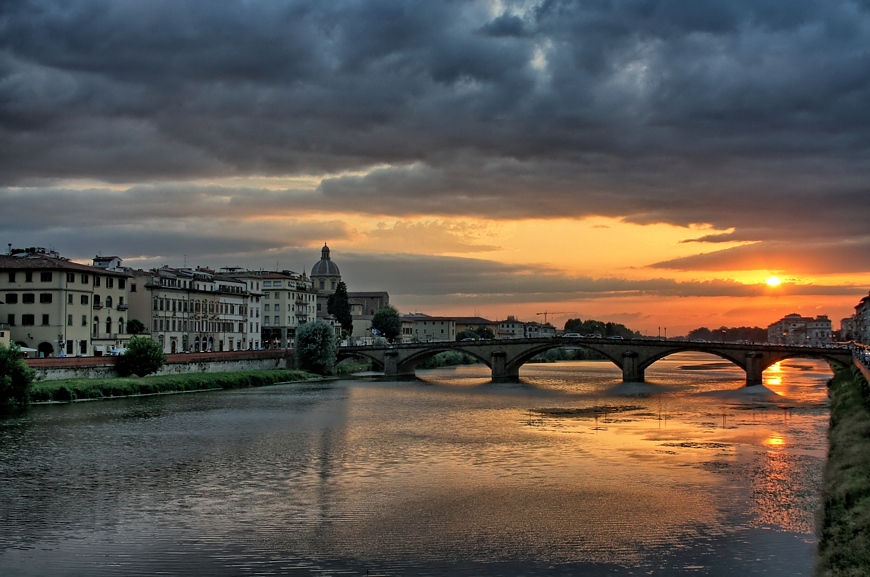
The evolution of HDR photography
HDR photography has come a long way since its early days. Back in the beginning of photography, photographers would manually combine different exposures in the darkroom to create images with greater dynamic range. It was a time-consuming process that required great skill and patience.
With the digital revolution, HDR became much more accessible. The 1990s and early 2000s saw the development of specialized software that could automatically blend multiple exposures. This made HDR photography available to more people, not just professionals with darkroom experience.
Today, HDR is built into most smartphones and digital cameras. The technology has become so advanced that it often works automatically, giving everyone the power to create stunning, professional-looking images with just a tap of a button.
How HDR photography actually works
The process of creating HDR images is both fascinating and surprisingly straightforward. It all starts with capturing multiple photos of the same scene at different exposure settings. Typically, you’ll take one photo that’s properly exposed, one that’s underexposed to capture highlight details, and one that’s overexposed to bring out shadow details.
Using a tripod is essential for keeping your camera completely still between shots. Any movement can cause alignment issues when you blend the images later. This stability ensures that all the details line up perfectly in your final HDR image.
After capturing your images, special HDR software merges them together. This software analyzes each photo and combines the best parts from each exposure, then adjusts the tones and colors to create a natural-looking final image that maintains detail throughout the entire brightness range.
Advantages of using HDR in your photography
Using HDR techniques can dramatically improve your photos in several important ways. The benefits extend beyond just technical improvements—they can transform ordinary shots into extraordinary images that capture the true feeling of a moment.
One of the biggest advantages is the incredible detail preservation. HDR photos show textures and fine details that often get lost in regular photographs. Whether it’s the individual leaves on a tree against a bright sky or the intricate patterns in shadowy areas, HDR brings everything into clear view.
The color improvement is another significant benefit. HDR processing enhances color accuracy and vibrancy, making your images look more lifelike and engaging. Colors appear richer and more true-to-life, which is especially noticeable in nature photography and landscape shots.
Perhaps the most valuable benefit is how HDR handles challenging lighting situations. It eliminates blown-out highlights and featureless shadows, creating balanced images that properly represent both the bright and dark areas of your scene.
HDR applications across different photography genres
HDR isn’t just for one type of photography—it’s incredibly versatile and useful across numerous photography styles and situations. Different genres benefit from HDR in unique ways, making it a valuable technique for all kinds of photographers.
Landscape photography with HDR
Landscape photographers love HDR because it helps them capture the full beauty of natural scenes. When you’re photographing a landscape, you often face a bright sky and a darker foreground. HDR balances these extreme lighting conditions, allowing you to see cloud details in the sky while still maintaining detail in the land below.
The technique is perfect for sunrise and sunset shots, where the dynamic range between the bright sky and darker landscape is at its most extreme. HDR helps create landscape images that truly do justice to the breathtaking scenes we experience in person.
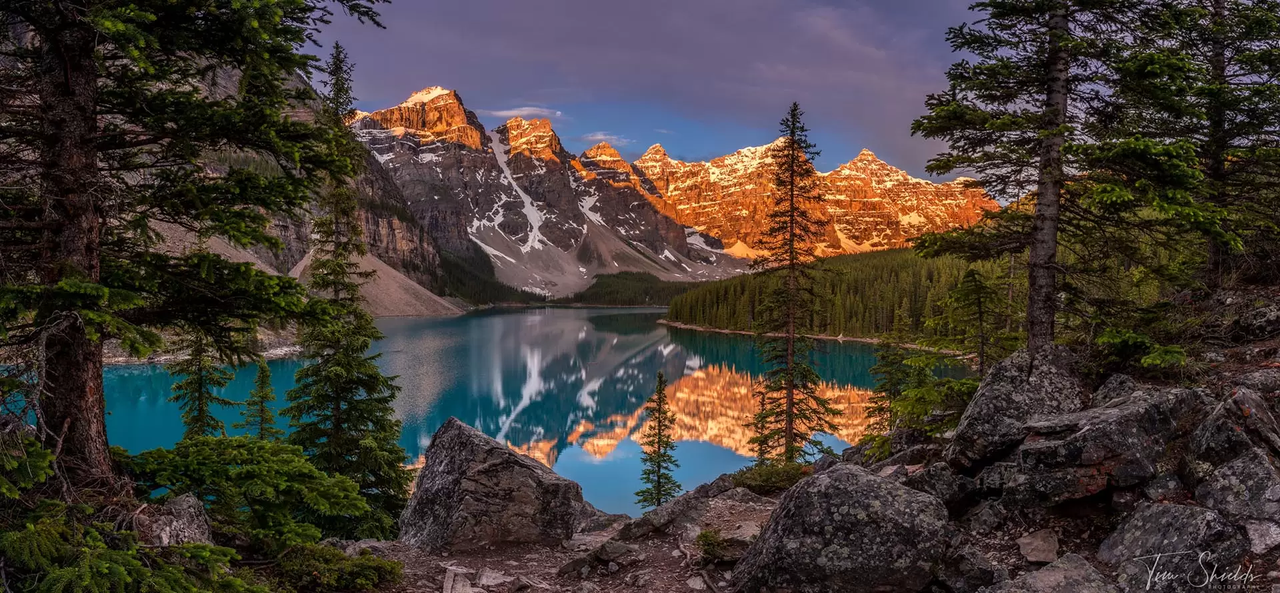
Architectural photography enhancement
Buildings and structures often present challenging lighting situations, with bright skies behind them and shadowed areas in architectural details. HDR helps architectural photographers capture both the exterior environment and the building’s design details in a single image.
This technique is particularly useful for interior architectural photography, where windows can create extreme brightness while interior spaces remain relatively dark. HDR allows photographers to show both the view outside and the interior design elements without compromise.
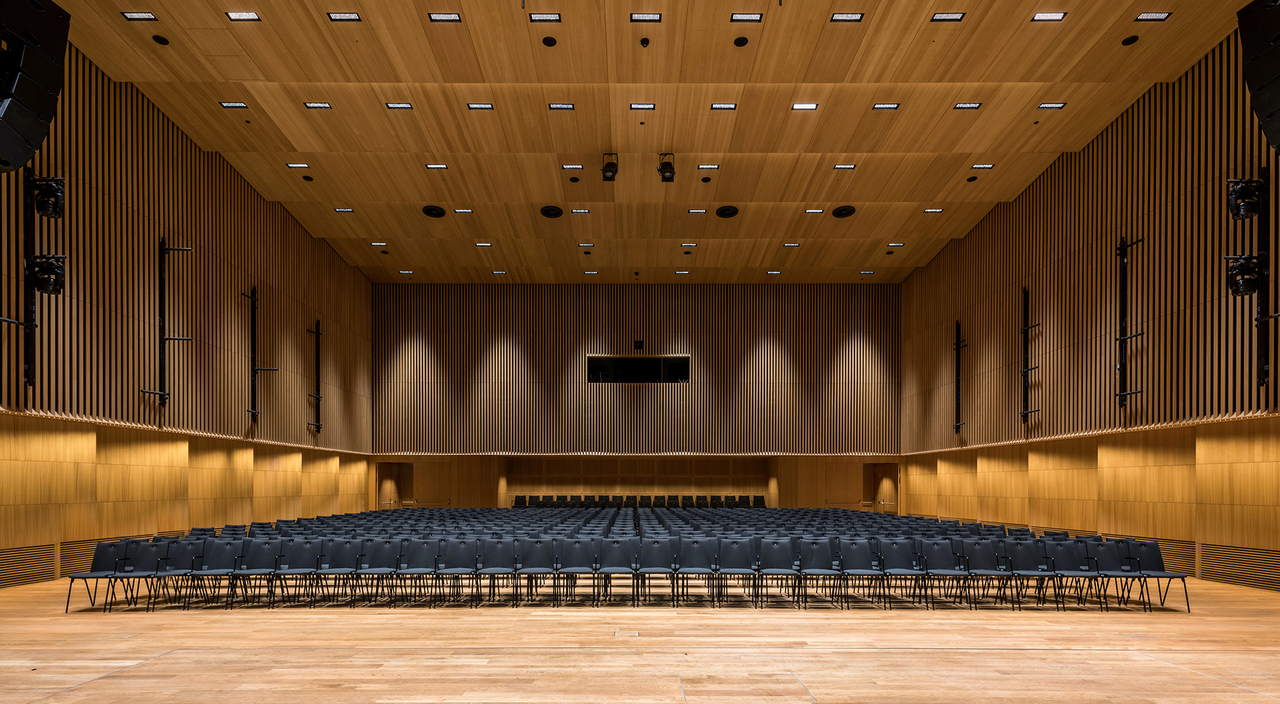
Low-light and indoor photography
Shooting indoors or in low-light conditions can be frustrating without HDR techniques. These environments often have mixed lighting sources and deep shadows that challenge conventional photography methods.
HDR excels in these situations by brightening shadow areas while controlling highlight blow-out from windows or artificial lights. This results in cleaner, more detailed images that properly represent the actual lighting environment rather than compromising on either shadows or highlights.
Product photography perfection
In product photography, accurately representing colors, textures, and details is crucial. HDR helps eliminate harsh shadows and blown-out highlights that can make products look unattractive or inaccurate.
Whether you’re photographing items for e-commerce or creating commercial product images, HDR ensures that every detail is visible and colors are represented true to life. This is especially important for online shopping, where customers rely heavily on product images to make purchasing decisions.
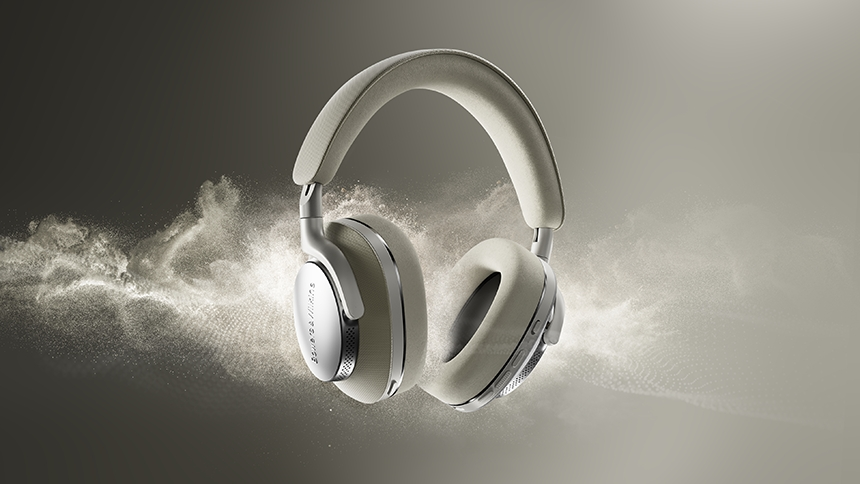
Essential gear for HDR photography
Getting started with HDR photography requires some basic equipment that will help you capture the best possible images. While you can create HDR photos with minimal gear, having the right equipment makes the process easier and produces better results.
The most important piece of equipment is a camera that allows manual control over exposure settings. While many smartphones now have built-in HDR capabilities, DSLR and mirrorless cameras offer more control and higher quality results. Look for cameras with automatic exposure bracketing features, which make capturing multiple exposures much simpler.

Lens selection also plays an important role in HDR photography. Quality lenses with good sharpness and minimal distortion will help ensure that all your exposure frames align properly during the merging process. Prime lenses often provide excellent image quality, while wide-angle lenses are great for landscape HDR work.
Filters can be incredibly helpful for HDR photography, particularly neutral density filters that allow you to manage extreme lighting conditions without changing your camera settings dramatically. These filters help maintain consistent exposure across your sequence of images.
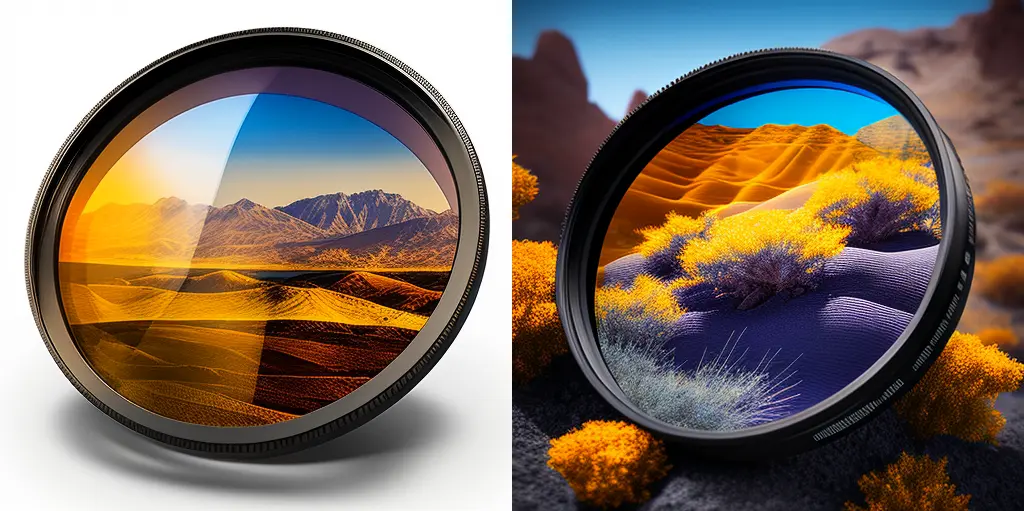
A sturdy tripod is absolutely essential for HDR photography. Since you’ll be taking multiple shots of the same scene, any camera movement between exposures can create alignment problems during the merging process. A good tripod keeps your camera perfectly still throughout the exposure sequence.
Additional accessories like remote shutter releases can help prevent camera shake when triggering your exposures. Extra memory cards and batteries are also recommended, as HDR photography typically involves capturing multiple images for each final photograph you create.
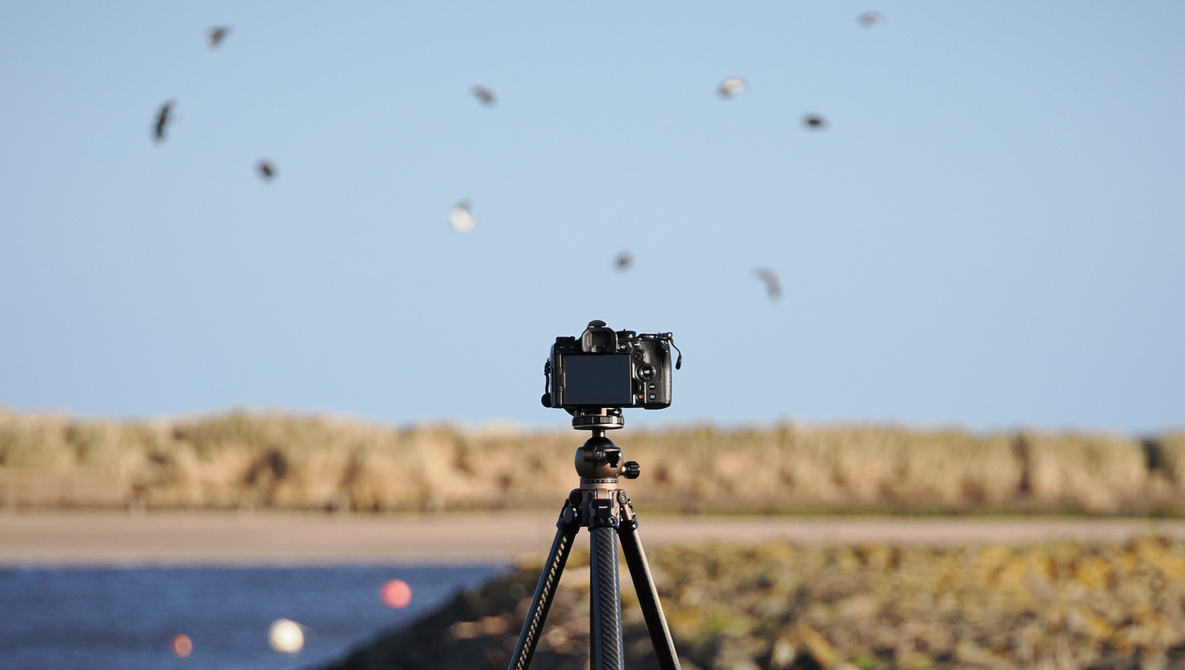
Common HDR mistakes and how to fix them
Even with the best equipment, photographers can run into issues when working with HDR techniques. Understanding these common problems and knowing how to avoid them will help you create better HDR images.
One of the most common mistakes is overprocessing HDR images. It’s easy to get carried away with the sliders and create images that look unnatural and oversaturated. The best HDR images often look completely natural—you wouldn’t even know they were HDR unless you were told.
To avoid overprocessed looks, make subtle adjustments and frequently step back from your work to check if the image still looks realistic. Remember that the goal of HDR is to create images that represent what your eyes see, not to create surreal-looking artwork (unless that’s your intention).
Movement issues, often called “ghosting,” occur when objects move between your exposures. This can include people walking, cars moving, or leaves blowing in the wind. These moving elements create blurry artifacts in your final merged image.
To minimize ghosting, try to shoot in conditions with minimal movement. If you must shoot with moving elements, many HDR software programs include ghost reduction tools that can help minimize these issues. Some advanced programs can even detect and remove moving objects automatically.
Other technical issues like halos (bright lines around high-contrast edges) and noise can also plague HDR images. Halos are often caused by over-aggressive tone mapping, while noise can be exacerbated by the HDR process itself.
To avoid halos, use more conservative tone mapping settings and avoid excessive clarity or sharpening adjustments. For noise reduction, shoot at lower ISO settings when possible and use noise reduction tools during post-processing.
Exploring smart HDR capcut features
If you’re interested in applying HDR effects to your videos, CapCut offers incredible tools that make the process accessible to everyone. You might be wondering what is smart HDR in CapCut exactly? It’s an intelligent feature that automatically analyzes your footage and applies optimal HDR enhancements to bring out the best in your videos.
The smart HDR capcut functionality takes the guesswork out of video enhancement by automatically adjusting exposure, contrast, and color levels to create balanced, vibrant videos. This feature is particularly useful for content creators who want professional-looking results without spending hours on manual adjustments.
As a comprehensive high dynamic range app, CapCut provides everything you need to enhance your videos with HDR effects. The exposure on CapCut can be finely tuned to bring out details in both shadows and highlights, creating videos that look amazing on any screen.
The video editor HDR capabilities in CapCut extend beyond basic adjustments, offering advanced controls for those who want to fine-tune their results. Whether you’re working with smartphone footage or professional camera recordings, CapCut’s HDR tools can significantly improve your final video quality.
CapCut — Your all-in-one video & photo editing powerhouse! Experience AI auto-editing, realistic effects, a huge template library, and AI audio transformation. Easily create professional masterpieces and social media viral hits. Available on Desktop, Web, and Mobile App.
Creating HDR video effects with CapCut
CapCut’s desktop video editor makes it surprisingly easy to apply professional HDR effects to your videos. The process is straightforward and doesn’t require advanced technical knowledge, making it perfect for beginners and experienced editors alike.
To get started, you’ll need to download and install the CapCut desktop video editor. The installation process is quick and simple, and once completed, you’ll have access to a powerful set of editing tools designed specifically for enhancing video quality with HDR effects.
The first step in creating HDR videos is importing your footage into CapCut. You can simply drag and drop your video files into the editor or use the import function to browse for your files. CapCut supports a wide range of video formats, making it compatible with footage from most cameras and smartphones.
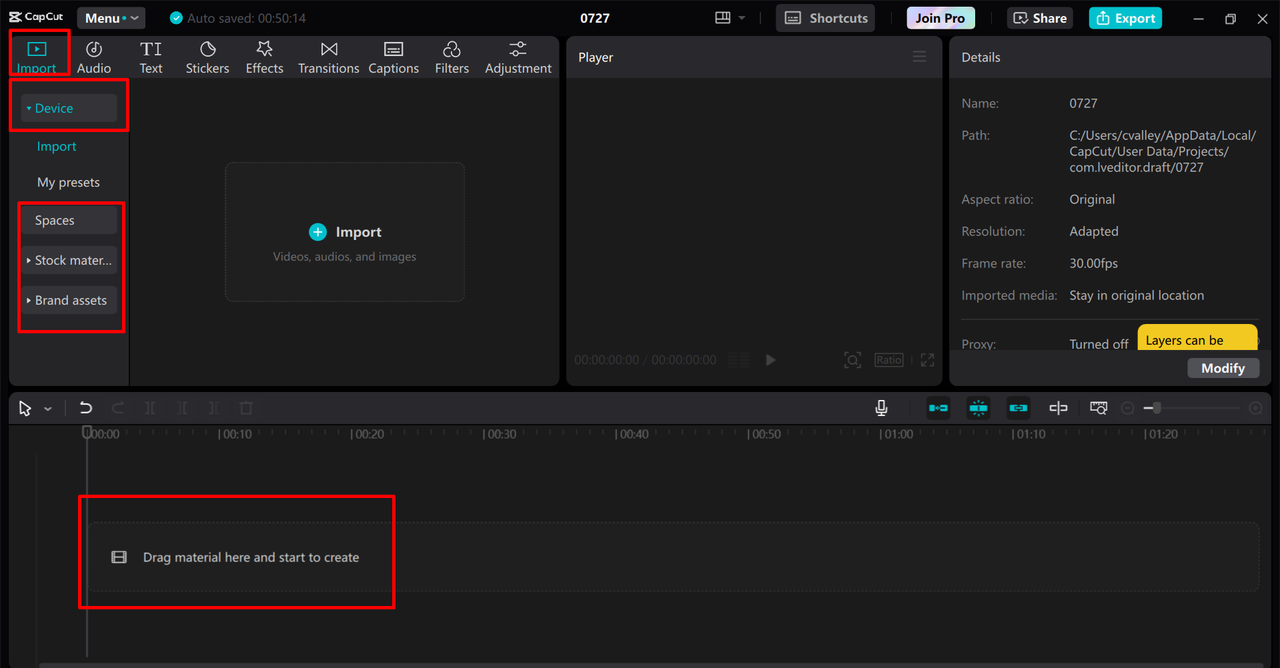
Once your video is imported, you can begin adjusting the exposure on CapCut to create your HDR effect. The editor provides intuitive sliders for adjusting brightness, contrast, shadows, and highlights. These controls allow you to specifically target the areas of your video that need enhancement, bringing out details that would otherwise be lost.
For those who prefer a quicker approach, CapCut offers preset HDR filters that can be applied with a single click. These presets are designed by professionals and can serve as an excellent starting point for your HDR adjustments. You can always customize these presets further to match your specific vision for the video.
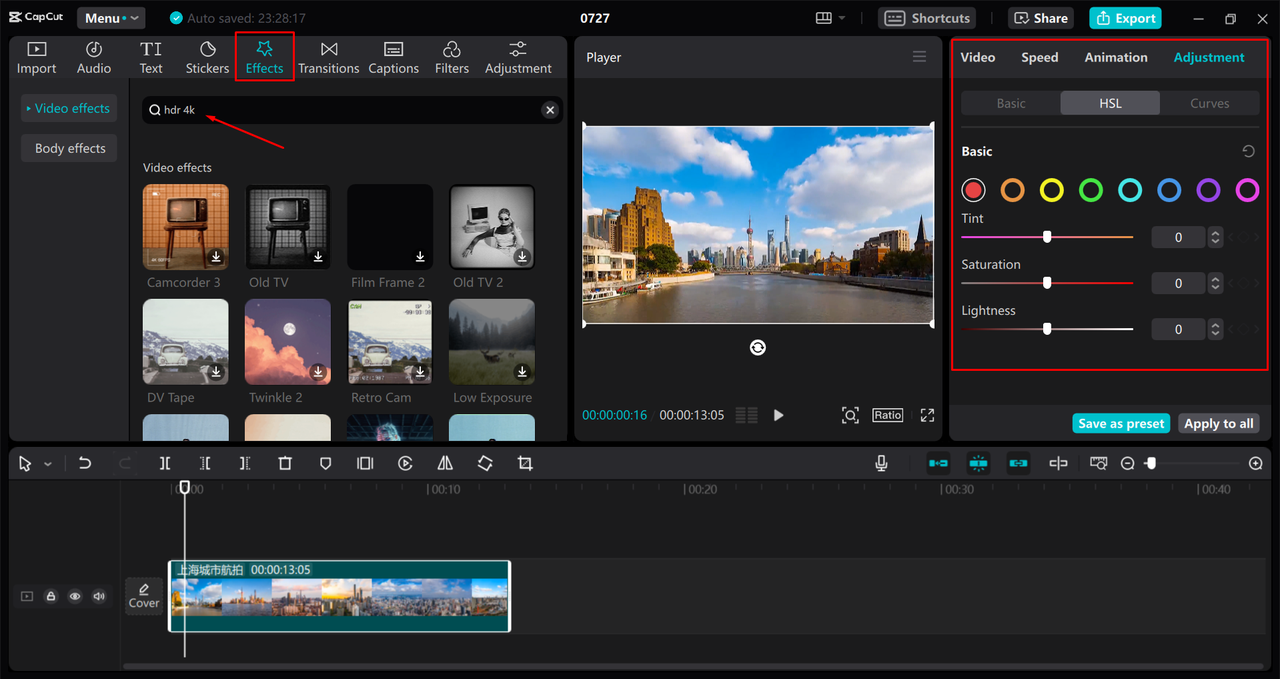
After perfecting your HDR adjustments, the final step is exporting your video. CapCut provides various export options optimized for different platforms like YouTube, TikTok, and Instagram. You can choose the resolution, format, and quality settings that best suit your needs, ensuring your HDR-enhanced video looks fantastic wherever you share it.
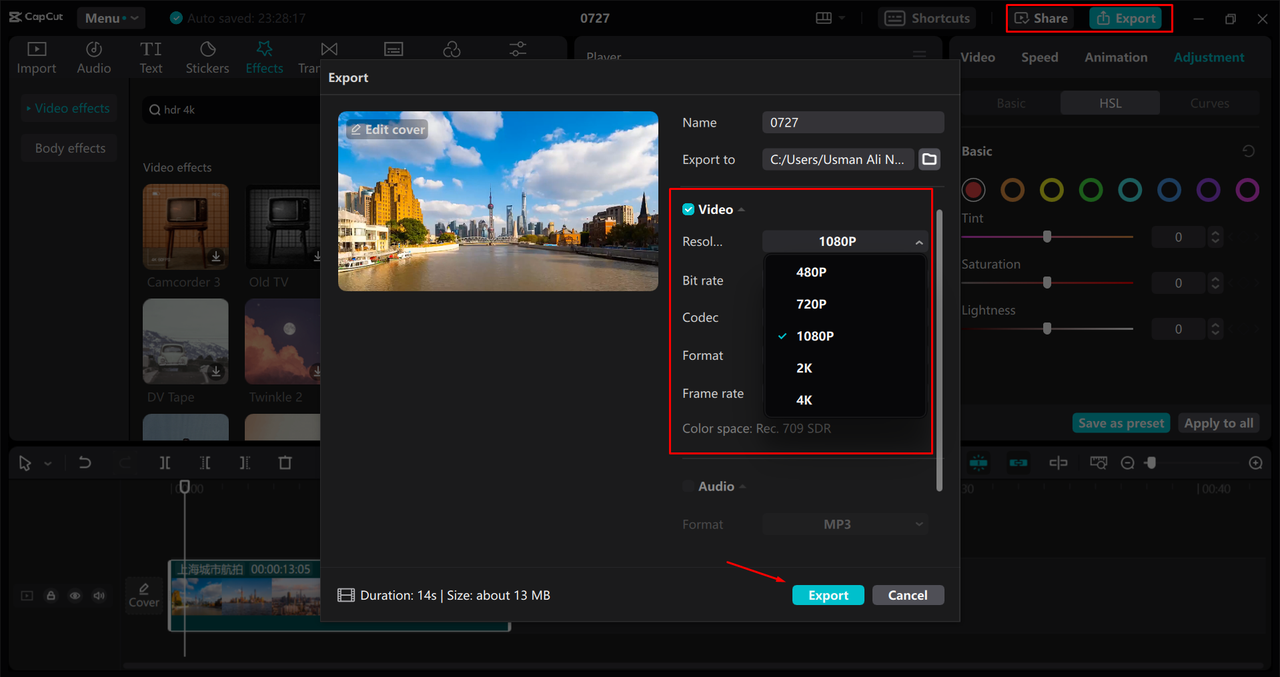
Maximizing your video editor HDR experience
Using a video editor HDR tool like CapCut opens up creative possibilities that can transform your video content. The smart HDR capcut features are particularly impressive for automatically enhancing footage without requiring manual intervention, making it perfect for quick edits and social media content.
As you become more familiar with CapCut’s HDR capabilities, you’ll discover that the exposure on CapCut can be adjusted with precision that rivals professional editing software. The ability to separately control shadows, midtones, and highlights gives you incredible flexibility in crafting the exact look you want for your videos.
What makes CapCut stand out as a high dynamic range app is its balance between automated simplicity and manual control. Beginners can achieve great results with the smart HDR features, while more experienced editors can dive into the advanced controls for fine-tuning their HDR effects.
The video editor HDR tools in CapCut are continuously updated with new features and improvements, ensuring that you always have access to the latest HDR technology. Regular updates mean your editing capabilities will keep getting better over time, helping you create increasingly impressive video content.
CapCut — Your all-in-one video & photo editing powerhouse! Experience AI auto-editing, realistic effects, a huge template library, and AI audio transformation. Easily create professional masterpieces and social media viral hits. Available on Desktop, Web, and Mobile App.
Final thoughts on HDR photography and video
HDR technology has fundamentally changed how we capture and experience images and videos. By expanding the dynamic range beyond what traditional photography can achieve, HDR allows us to create content that more accurately represents the rich visual world around us.
Whether you’re working with still photography or video content, understanding and utilizing HDR techniques can significantly improve your results. The technology continues to evolve, becoming more accessible and powerful with each passing year, opening up creative possibilities for photographers and videographers of all skill levels.
For those looking to incorporate HDR into their video workflow, CapCut provides an excellent platform that combines ease of use with powerful editing capabilities. The smart HDR capcut features make professional-looking results achievable for everyone, regardless of their editing experience.
As you explore HDR photography and video editing, remember that the best results often come from subtle applications of the technology. The goal is to enhance your images and videos in a way that feels natural and true to life, creating content that captures the full beauty of your subjects.
Frequently asked questions
How does HDR improve image quality? HDR improves images by capturing a wider range of light information than standard photography techniques. It combines multiple exposures to preserve details in both highlight and shadow areas that would normally be lost. This results in images with better color accuracy, enhanced detail, and more balanced exposure throughout the frame.
Can HDR be used for portrait photography? Yes, HDR can be very effective for portrait photography, especially in challenging lighting conditions like backlit situations or mixed lighting environments. However, it’s important to use HDR subtly for portraits to maintain natural skin tones and avoid an overcooked look
 TOOL HUNTER
TOOL HUNTER 